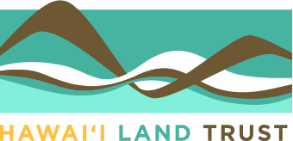Wetlands Restoration and Cultural Preservation: A Perspective from the Island of Maui
He aliʻi ka ʻāina, he kauā ke kānaka. This frequently spoken ʻōlelo noʻeau, or proverb, succinctly sums up the Hawaiian view on the human relationship to our environment: the land is the chief, and people are the servants. Traditionally, wetlands in particular were revered as agriculturally productive lands where the elder sibling of the Hawaiian people and staple of life, kalo (taro), was grown. Wetlands (pohō or ʻolokele in Hawaiian) were also home to water deities, or moʻo, fierce dragons who protected their homes from destruction and desecration, ensuring the sanctity of these lands.
Receiving the 2023 Environmental Law Institute’s Local Stewardship award has provided me with a platform to articulate the vital importance Hawaiian wetlands play both in the health of native ecosystems and in the perpetuation of Hawaiian culture. For over 20 years the Hawaiʻi Land Trust has been working to protect and restore the function and composition of the Waiheʻe wetlands on Maui. Included among this 27-acre wetlands complex is a 7-acre loko kalo iʻa, a fishpond used for the cultivation of both taro and fish, built in the 16th-century during the reign of Maui’s high chief, Chief Piʻilani. For generations, this fishpond provided abundantly for the nearby community, a remarkably sustainable feature on the landscape making Waiheʻe one of the wealthiest communities on Maui.
In the mid-19th century, as economic forces changed the landscape of Hawaiʻi, both literally and figuratively, wetlands were no longer seen as the sacred lands of previous generations but as an impediment to growth. By the early 20th century, a dairy opened nearby, and the wetlands were drained and converted to pasture. The dairy closed in 1970 and by the late 1980s a destination golf course company purchased the land with the intention of filling the wetlands and converting this once sacred land into condominiums and driving ranges.
Thankfully, this never happened. With every turn of a shovel, the community came to realize—and remember—the sanctity of this land. With a downturn in the economy and a recession that followed, the landowner ended this project and the land trust found itself in an ideal position to reverse this trend of conversion and desecration. The past 20 years have witnessed an amazing outpouring of community support as thousands of Mauiʻs residents and visitors have turned their hands into the soil to once again bring life to the land.
Through the dedication of our staff and volunteers, the wetlands at Waiheʻe once again provide habitat for our indigenous and endemic waterbirds. Restoring the water that once flowed into the area was one of the most significant challenges to restoring the wetlands. However, after a 15-year legal battle, the Hawaiʻi Supreme Court sided with us, allowing us to direct 1.5 million gallons into the Waiheʻe wetlands. Because of this decision we can proceed with the rebuilding of the fishpond, a critical step towards both community resilience and cultural restoration. Beginning shortly after this ruling, we began the important step of engaging with the community to rebuild the fishpond, a task made more gratifying in the knowledge that many of those working with us are direct descendants of the kūpuna (elders) who built the fishpond over 500 years ago.
Although there does seem to be a paradigm shift in the recognition of the importance of wetland ecosystems, the threat to these vital ecosystems remains. Recent court rulings have eroded many of the protections intended to safeguard these vital ecosystems, particularly the EPA’s ability to regulate discharges into wetlands ecosystems. As history reveals, such paradigm swings should be expected.
Receiving the Environmental Law Institute’s award in 2023 has been immensely gratifying, both personally and professionally, but more importantly as a recognition of the community’s commitment to shifting the paradigm towards caring for and healing the land. Another ‘ōlelo noʻeau perfectly captures the power of the community to change things for the better: ʻAʻohe hana nui ke alu ʻia, no task is too great when done together by all.
- Dr. Scott Fisher Director of ʻĀina (Land) Stewardship, Hawai’i Land Trust written for the Environmental Law Institute




